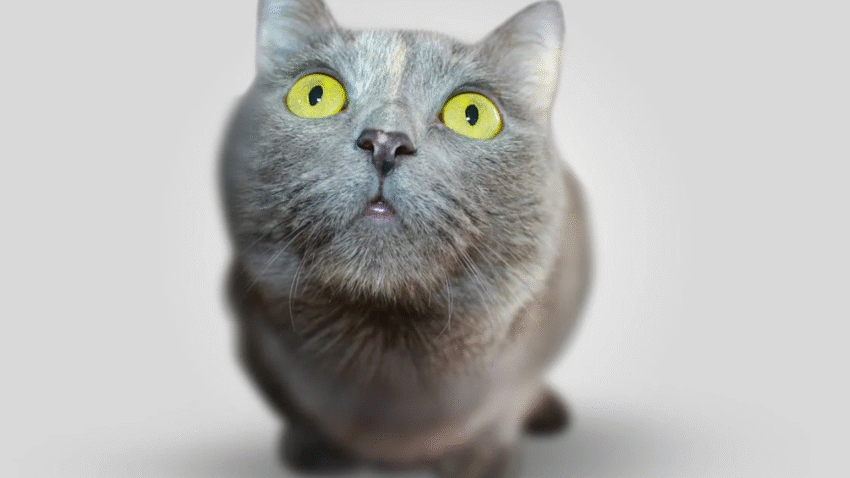Introduction
Dealing with stubborn tangles or clumps in your cat’s fur? Mats can be painful and even harmful to your cat if left untreated. Whether your cat has long hair or is just prone to tangling, this guide will show you how to remove mats from your cat’s fur safely and gently. We’ll cover the right tools, techniques, and tips to prevent stress—and keep your cat’s coat clean, soft, and healthy.
If you’ve ever struggled with mats that seem impossible to detangle, don’t worry—we’ve got you covered step by step.
Why Removing Mats Matters for Cats
Matted fur isn’t just an aesthetic issue—it can cause serious health and comfort problems for your cat if ignored.
Here’s why removing mats is important:
- Prevents pain and skin irritation caused by tight, pulling clumps
- Reduces risk of skin infections or wounds under the mat
- Keeps your cat comfortable and mobile, especially around legs and belly
- Improves grooming habits and coat health
Mats most often appear in areas like the belly, armpits, tail base, behind the ears, and along the back—especially in long-haired cats, older cats, or cats who can’t groom properly due to obesity or arthritis.
Step-by-Step Guide to Removing Mats from Your Cat’s Fur
Follow this safe and effective method to remove mats without hurting your cat—or yourself.
1. Gather the Right Tools
Before you start, make sure you have:
- Wide-tooth comb or dematting comb
- Slicker brush for finishing
- Mat splitter or mat rake for tougher tangles
- Blunt-tipped grooming scissors (only if necessary)
- Cornstarch or detangling spray (optional, to loosen mats)
- Treats and towel for comfort and control
💡 Tip: Avoid using sharp scissors or razors—one wrong move can cut your cat’s delicate skin.
2. Choose a Calm Environment
- Pick a quiet, comfortable spot where your cat feels safe.
- Groom when your cat is relaxed—after a nap or meal is ideal.
- If needed, wrap your cat gently in a towel with only the area you’re working on exposed (this technique is called a “kitty burrito”).
Speak calmly and reward often to keep your cat at ease.
3. Assess the Mat
- Determine if the mat is surface level (light tangle) or deep and tight.
- Light mats can usually be combed out, while severe mats may need trimming or veterinary assistance.
If the mat is attached close to the skin and cannot be loosened easily, don’t force it—it’s safer to seek professional grooming help.
4. Loosen and Separate the Mat
- Gently sprinkle a small amount of cornstarch or use a detangling spray on the mat to reduce friction.
- Hold the fur close to the skin to avoid pulling as you work.
- Use a wide-tooth comb to separate the edges of the mat, working from the outside in—never pull at the whole mat all at once.
Take your time, and stop if your cat becomes agitated.
5. Use a Mat Splitter or Rake
- For tight or thick mats, gently use a mat splitter or dematting tool to break the clump into smaller sections.
- Always work with the direction of hair growth, not against it.
- Use short, careful strokes, and stop to reward your cat between steps.
If your cat flinches or cries out, the mat may be too close to the skin—stop and reassess.
6. Trim Mats Only When Necessary
- If the mat won’t budge and your cat is uncomfortable, carefully snip it away using blunt-ended scissors.
- Place a comb between the mat and your cat’s skin before cutting to protect against injury.
- Trim in small sections and always cut parallel to the skin.
If you’re unsure or nervous, it’s best to leave this to a groomer or vet.
7. Finish With a Gentle Brush
- Once the mat is removed, use a slicker brush to gently smooth the area.
- Brush in the direction of fur growth to reduce discomfort.
- Give lots of praise and a treat when finished—this helps build a positive grooming association.
Repeat this process regularly to prevent future mats from forming.
Common Mistakes to Avoid
Avoid these errors when removing mats from your cat’s coat:
- Using sharp scissors without protection
➤ This can easily cut your cat’s skin. Always use a comb as a barrier. - Trying to pull out a mat forcefully
➤ Pulling hurts and can cause fear or aggression. Always loosen gently. - Skipping regular brushing
➤ Mats often develop when dead hair and dirt build up unnoticed. - Over-cleaning or using the wrong sprays
➤ Avoid human detanglers—they may contain unsafe ingredients for cats. - Letting mats grow too large
➤ The larger the mat, the more painful and difficult it becomes. Address small tangles early.
Extra Tips & Recommendations
Here are a few extra ways to keep your cat’s fur mat-free in the future:
- Brush daily for long-haired breeds and weekly for short-haired cats.
- Use a grooming glove if your cat dislikes brushes—many tolerate it better.
- Check high-risk areas (behind ears, under legs, belly) regularly for early signs of matting.
- Schedule professional grooming every few months for long-haired or elderly cats.
Also, if your cat suddenly stops grooming, talk to your vet. Pain, obesity, or dental issues could be the cause.
Want more grooming help? Check out our guide on How to Brush Your Cat’s Coat Without Causing Stress for more helpful techniques.
Conclusion
Removing mats from your cat’s fur doesn’t have to be a stressful experience—for you or your pet. With the right tools, gentle handling, and regular grooming habits, you can keep your cat’s coat smooth, healthy, and pain-free. Take it slow, reward your cat often, and never be afraid to ask for professional help when needed.
🐾 A mat-free coat isn’t just about looks—it’s about your cat’s comfort and wellbeing.
